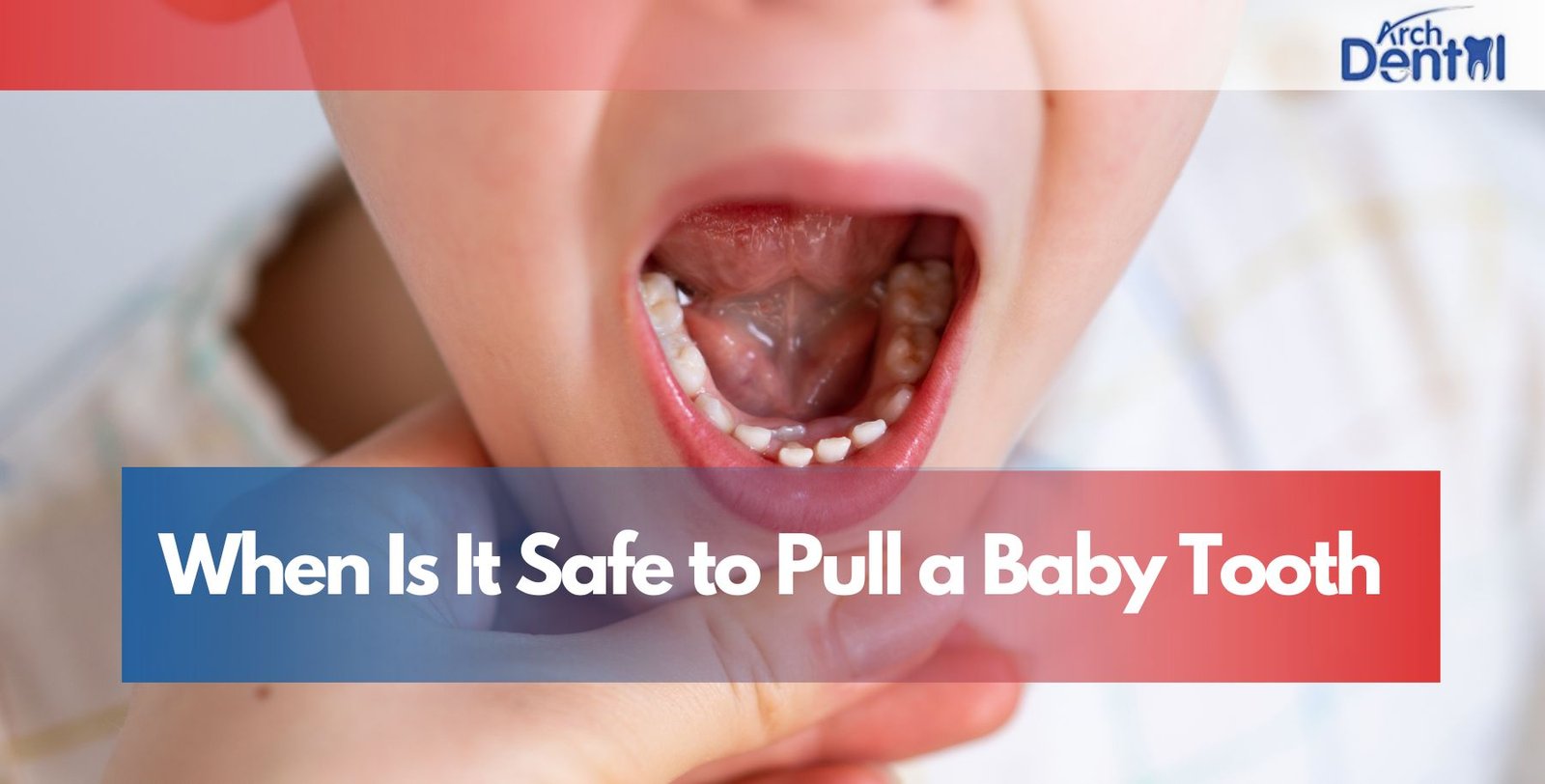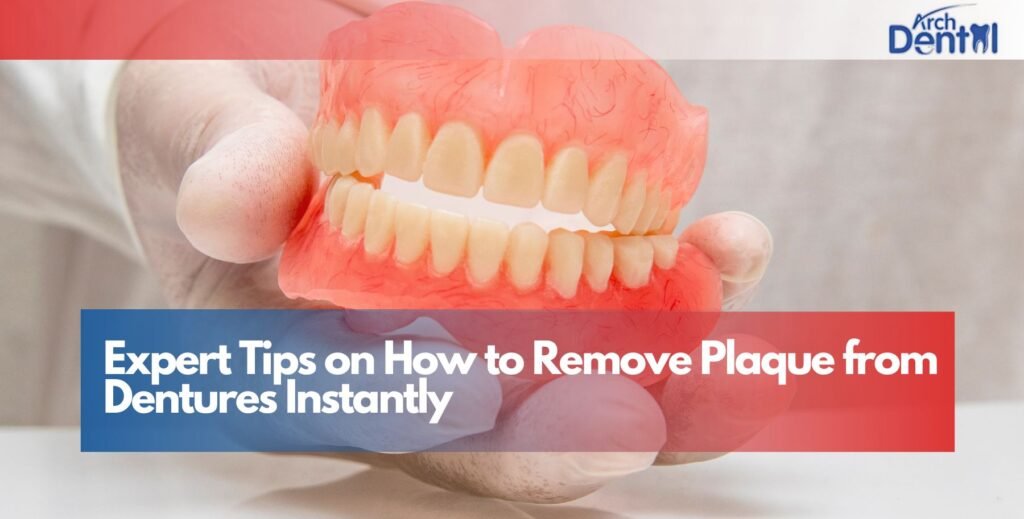Every parent eventually faces that moment when their child excitedly wiggles a loose tooth, waiting for it to fall out. But as tempting as it might be to help things along, it’s important to know when it’s actually safe to pull a baby tooth and when it’s best to let nature take its course.
Baby teeth, also called primary teeth, play a big role in your child’s oral development. They help with chewing, speech, and guide adult teeth into the right position. Removing them too early or too forcefully can cause bleeding, pain, or even harm the permanent tooth growing beneath.
This guide will walk you through everything you need to know from the natural tooth loss process to safe removal methods and what to do afterward written with dental expertise and clear, human-friendly advice.
Understanding the Natural Process of Losing Baby Teeth
Children typically begin losing their first teeth between ages 5 and 7, though it can vary depending on genetics and dental development.
How Baby Teeth Fall Out Naturally
Each baby tooth eventually loosens as the permanent tooth underneath pushes upward. The roots of the baby tooth dissolve gradually, causing it to become wiggly until it detaches naturally. This process ensures that the gums and surrounding tissues stay healthy.
Most of the time, no intervention is needed — the tooth falls out on its own while eating or brushing.
The Typical Order of Tooth Loss
Usually, the bottom front teeth (central incisors) fall out first, followed by the upper front teeth. The process continues in stages until all 20 baby teeth are replaced by 28–32 adult teeth.
Knowing the natural order helps parents recognize when early tooth loss might signal a problem.
Why It’s Important Not to Rush Tooth Removal
It’s normal to feel eager to help your child get rid of that wobbly tooth, but pulling it too soon can lead to pain and complications.
Risks of Pulling a Tooth Too Early
- Pain and bleeding: Removing a tooth before it’s ready can tear tissue still attached to the root.
- Infection: An open wound in the mouth can allow bacteria to enter, leading to infection.
- Damage to permanent teeth: Forceful pulling can injure the developing adult tooth beneath.
- Misalignment: Losing baby teeth too early can affect spacing, causing crooked or crowded adult teeth.
Patience is key. A tooth that’s ready to fall out will usually come out with little effort or discomfort.
Signs That a Baby Tooth Is Ready to Be Pulled
Recognizing when a tooth is ready helps avoid unnecessary pain and keeps your child’s smile healthy.
Clear Signs the Tooth Is Ready
- The tooth moves easily in all directions with just a light touch.
- Your child feels no pain when wiggling it.
- The tooth looks slightly raised compared to others.
- The gums around it are pink and healthy, not swollen or red.
- Eating or brushing makes the tooth twist or dangle.
If these signs are present, the tooth can often be removed safely at home with gentle handling.
When to Wait Before Pulling a Baby Tooth
Not every loose tooth is ready to come out right away. Sometimes, waiting is the safest choice.
When You Should Wait
- The tooth feels firm or only wiggles slightly.
- Your child complains of pain when touching it.
- The gums look swollen, red, or irritated.
- You see no permanent tooth emerging underneath.
In these cases, encourage gentle wiggling and let the tooth loosen naturally over time. Forcing it can cause unnecessary pain or bleeding.
How to Prepare for Safe Tooth Removal
Preparation makes the process easier, safer, and more comfortable for your child.
Wash Your Hands Thoroughly
Always begin with clean hands to prevent introducing bacteria into your child’s mouth.
Use Clean Tools
Have sterile gauze or a clean tissue ready to hold the tooth once it’s out.
Rinse with Warm Salt Water
Before pulling, have your child rinse their mouth with warm salt water (½ teaspoon of salt in a cup of water) to clean the area.
Check for Pain
If the tooth still causes discomfort when touched, it’s best to wait a few more days.
Step-by-Step: How to Pull a Baby Tooth Without Pain
If the tooth is very loose and ready, these steps can help you remove it safely.
Step 1: Wiggle the Tooth Gently
Encourage your child to use their tongue or clean fingers to wiggle the tooth daily. This helps the root break down naturally.
Step 2: Use a Clean Tissue or Gauze
Once it’s hanging by a tiny piece of tissue, wrap the tooth with sterile gauze for better grip.
Step 3: Twist and Pull Quickly
With a firm but gentle motion, twist the tooth slightly while pulling it out quickly. A fast motion is usually less painful than slow tugging.
Step 4: Control the Bleeding
Have your child bite down on clean gauze for 10–15 minutes. Slight bleeding is normal and should stop soon.
Step 5: Clean the Area
Rinse the mouth again with warm salt water to prevent bacteria buildup.
If bleeding continues for more than 30 minutes, contact your dentist.
Fun and Gentle Alternatives to Pulling
For children who are anxious or afraid, these natural methods make the experience easier.
The Crunchy Snack Trick
Biting into an apple or carrot can gently pull out a tooth that’s barely hanging on.
Encourage Natural Wiggling
Remind your child to wiggle the tooth with their tongue while watching TV or brushing.
Turn It Into a Fun Event
Use a “tooth fairy” reward to make the process exciting rather than scary.
Let It Fall Out Naturally
Many teeth fall out painlessly on their own during meals or daily activities.
When You Should See a Dentist Before Pulling
Not every wiggly tooth should be pulled at home. Sometimes, professional help is the best choice.
Visit a Dentist If:
- The tooth is loose due to injury, not natural development.
- Your child has pain, swelling, or fever.
- The tooth is discolored, black, or damaged.
- The permanent tooth is erupting behind the baby tooth.
- The tooth has been loose for months but won’t come out.
Your dentist can safely remove the tooth and check that the permanent one is erupting properly.
Possible Problems After Premature Tooth Loss
If a baby tooth falls out too early, it can lead to dental spacing issues and alignment problems later.
How Early Tooth Loss Affects Dental Health
- Shifting teeth: Nearby teeth may drift into the gap.
- Crowding: Adult teeth might not have enough space to emerge properly.
- Speech difficulties: Missing front teeth can affect pronunciation.
- Jaw development issues: Uneven bite pressure may affect jaw growth.
Treatment Options
Your dentist might recommend a space maintainer a small appliance that keeps the gap open until the permanent tooth appears.
Aftercare: What to Do Once the Tooth Is Out
Taking care of the gums after a tooth falls out helps prevent infection and ensures smooth healing.
Stop Bleeding
Have your child bite down on clean gauze until bleeding stops.
Keep the Area Clean
Rinse with warm salt water twice daily for the next day. Avoid brushing directly on the socket for 24 hours.
Watch for Signs of Infection
Redness, swelling, or pus may indicate infection. Contact your dentist if these symptoms appear.
Stick to Soft Foods
Offer smoothies, yogurt, or mashed potatoes for the first day. Avoid crunchy snacks until the gums heal.
Celebrate the Milestone!
Make the event positive a small reward or tooth fairy visit can help make the experience fun and stress-free.
Can You Pull Out a Baby Tooth That Isn’t Loose Yet?
No. Pulling a baby tooth before it’s loose can cause unnecessary pain, bleeding, and harm to the permanent tooth below.
Why You Shouldn’t Force It
Baby teeth are meant to fall out naturally when the permanent tooth is ready to take its place. Forcing it can lead to nerve damage, gum trauma, or infection.
If your child complains of tooth pain but the tooth isn’t loose, schedule a dental exam to rule out decay or other problems.
How to Handle a Tooth That Won’t Fall Out
Sometimes, a tooth stays loose for weeks without coming out.
Why It Might Be Delayed
- The permanent tooth hasn’t erupted yet.
- The root hasn’t fully dissolved.
- The tooth is being held by tough gum tissue.
If it’s been over a month and the tooth still hasn’t fallen out, your dentist can help remove it safely.
When a Permanent Tooth Appears Before the Baby Tooth Falls Out
It’s common for adult teeth to emerge behind baby teeth — a situation called shark teeth.
What to Do
If the baby tooth is still firm, visit your dentist. They might gently extract it to allow the permanent tooth to move into its correct position. Leaving both in place too long can lead to crowding or alignment problems.
Tips for Parents to Keep the Process Stress-Free
Helping your child lose their teeth should be a calm and positive experience.
Stay Patient
Avoid rushing the process. Baby teeth come out when they’re ready.
Use Gentle Encouragement
Let your child take the lead. This helps them feel in control and reduces anxiety.
Create a Fun Story
Tell them the Tooth Fairy is waiting for their shiny tooth — it makes the process exciting rather than scary.
Reward Good Oral Care
Encourage brushing and flossing to keep the gums healthy for upcoming adult teeth.
When a Loose Tooth Becomes an Emergency
If your child’s tooth becomes loose due to trauma or injury rather than natural causes, contact an emergency dentist immediately.
Dental Emergencies Include:
- Tooth knocked loose or out from a fall or accident
- Heavy bleeding from gums
- Tooth discolored or turning black
- Swelling or infection around a tooth
Quick dental attention can often save the tooth or prevent complications.
Conclusion
Pulling a baby tooth doesn’t have to be painful or stressful but it must be done at the right time and in the right way. If the tooth is loose, pain-free, and wiggly in all directions, it’s safe to help it along gently. But if there’s swelling, pain, or resistance, it’s best to wait or consult an emergency dentist to ensure your child’s oral health stays on track.
Every child’s smile develops at its own pace. Patience, gentle care, and regular dental visits will make the tooth-loss journey smooth and healthy.
FAQs
How to pull out a loose baby tooth safely?
Use clean hands or gauze to twist and pull a tooth that’s very loose. If it hurts or bleeds heavily, wait — it’s not ready yet.
What happens if a baby tooth is pulled too early?
Early removal can cause pain, infection, and spacing issues for permanent teeth. Always wait until it’s fully loose or seek a dentist’s help.
Can a dentist remove a baby tooth that isn’t loose?
Yes. If the permanent tooth is erupting but the baby tooth won’t fall out, a dentist can extract it safely to prevent crowding.
How long does it take for a baby tooth to fall out naturally?
Once loose, most teeth fall out within one to two weeks. The process varies depending on how quickly the root dissolves.
Is it normal for a child’s gums to bleed after a tooth falls out?
Yes, light bleeding is normal. Have your child bite on clean gauze for 10–15 minutes. If bleeding continues, see your dentist.





